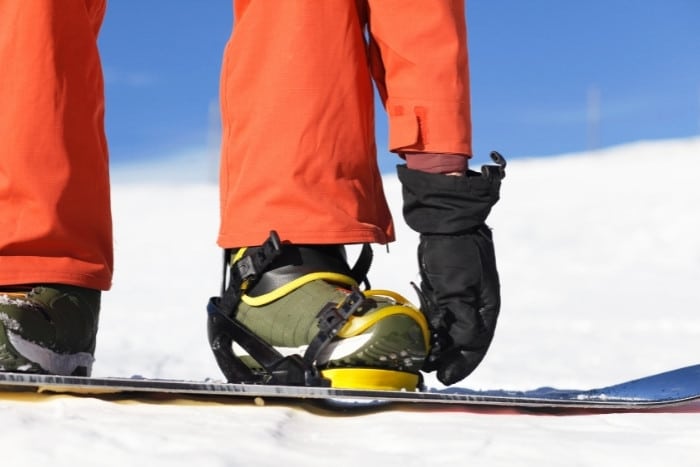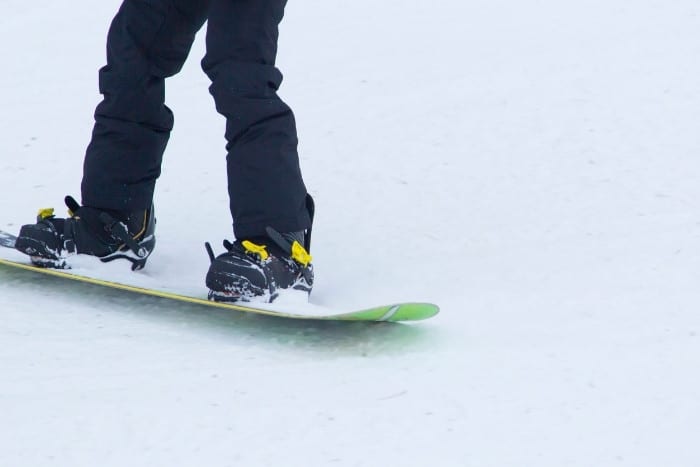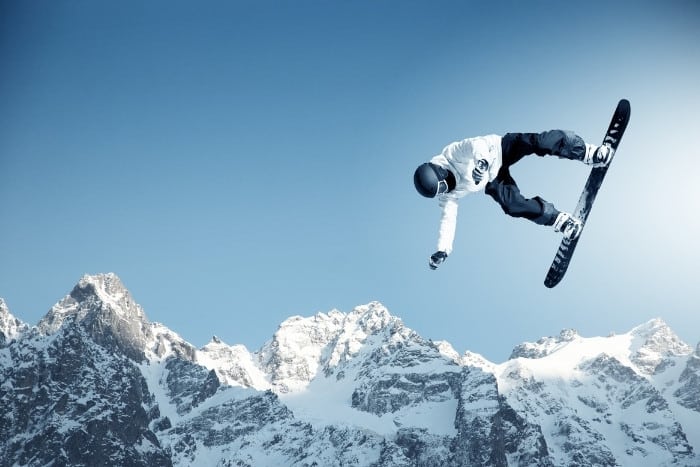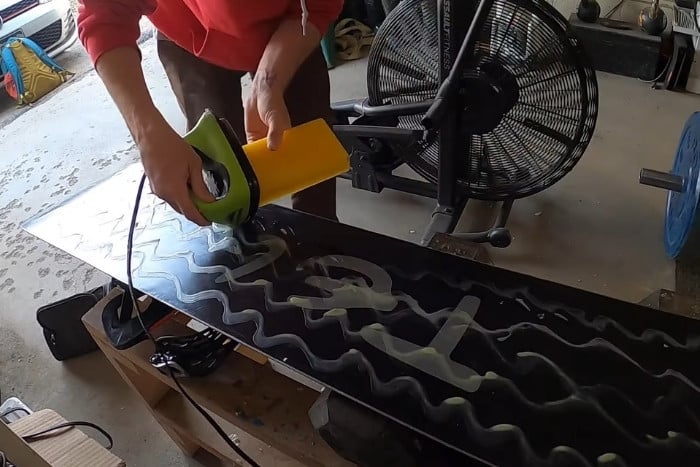Nothing lasts forever, and riding a too old or damaged snowboard can result in injury. Even if your board is in tip-top shape, there may come a time when it’s not suitable for your size, skill level, or riding style.
A snowboard is generally considered past its prime after 100 days of riding and at the end of its lifespan after 200 days. However, several factors impact the longevity of a board’s lifespan, and if you’ve outgrown your board or it’s damaged beyond repair, you may need to find a replacement sooner.
Below, we’re going to look at the signs that might indicate it’s time to buy a new snowboard, the factors that can increase or decrease its lifespan, and how you can extend your board’s usability for as long as possible.
How Long Does A Snowboard Last? – Signs You Need To Replace Yours
The primary reason for buying a new snowboard is when your old one just isn’t up to the task anymore. Many people also choose to donate their old snowboards.
Most manufacturers agree that the average lifespan of a snowboard is around 200 days of riding, although a few factors can affect this and either shorten or lengthen the period of usability.
These include the quality of the board itself, as well as where and how you ride it and how you take care of it.
There’s no point in guessing when your board has given up the ghost; instead, you’ll need to keep an eye out for a few tell-tale signs that it’s time to say farewell and start looking for a replacement.
1. Loose Bindings
It’s not unusual for your snowboard bindings to become a little loose from time to time.
The extreme temperatures boards are exposed to mean both the screws and threads that secure the bindings to the board’s base will expand and contract slightly.
Coupled with the fact our boards are constantly vibrating as we ride, the expansion and contraction will eventually lead to the screws loosening.
Fortunately, this problem is easily solved by using a screwdriver to check everything is properly secured each time you ride.
However, if you notice that your bindings are coming loose more often than usual or that you’re unable to tighten them properly, it may be a sign that it’s time to find a replacement board.
If it’s the screws themselves that are the problem, these can easily be replaced. However, if the issue is the threads, there’s not much to be done.
In some cases, plumber’s tape or a temporary thread-locking adhesive might work as a short-term solution.
Loose bindings are not something to ignore – not only do they make it far more difficult to stay in control of your board, but should one come free entirely, you’re at risk of serious injury.

2. Dulled Edges
Over time, the sharp edges of your snowboard will begin to dull.
Ordinarily, this isn’t an issue if you’re performing regular maintenance on your board, as it’s possible to sharpen them again with an edge “tuner.”
In fact, in some cases, you may even want to “de-tune” (blunt) some edge sections to prevent them from catching so easily.
Even slight dings and dents can be fixed with a diamond stone, which is basically a sandpaper block for metal.
At some point, you’ll find that your edges won’t stay sharp for very long. The amount of time it takes before this happens depends on the quality of the edges themselves, but it’s unavoidable in the long run.
A sharp edge is critical for cutting into the snow and letting the rider safely control their board, especially on hard packed and icier surfaces.
Hence, it stands to reason that permanently dull edges will eventually result in an accident, if not a consistently unenjoyable riding experience.
3. A (Non-Intentional) Flat Profile
Another sign that it’s time to replace your snowboard is when you notice the profile becoming flatter. When you set your board down on a flat surface, the profile is the side-on shape of the board.
Most boards will have some sort of camber to them, meaning you’ll notice an upward curve between the points where the board makes contact with the snow.
Alternatively, some boards will have a “rocker” profile, where the board makes more contact with the snow in the center of the base and curves upwards towards the nose and tail.
Some boards will even have a combination of these profile types, and other bases are flat on purpose (hence the “non-intentional” in the heading).
The longer you ride a camber or rocker board, the more the base will flatten out over time.
While this is a natural part of a snowboard’s aging process, sooner or later, it will start affecting the performance to the point that a replacement is necessary.

4. No More Pop
While a snowboard may start to physically flatten over time, it’s also possible for it to start feeling flat. By that, we mean the board begins to lose its “pop.”
When we talk about pop, we’re referring to the potential energy stored in the board and how it rebounds.
It’s a concept that’s a little tricky to describe accurately without experiencing it for oneself, but it’s a crucial element of snowboarding.
At some point during its lifespan, a board will lose this pop as the core materials degrade, and it won’t behave as normal – it’ll start feeling flat.
When this becomes noticeable, it’s a sign that the end is nigh, and it’s time to start looking for your next ride.
Other Reasons To Buy A New Snowboard
While the reasons listed above for replacing your snowboard are degradations that occur gradually over time and are things you can keep tabs on, there are occasions when you need to buy a new board immediately.
If you’re ever in doubt, take your ride into your local snowboard shop for an assessment to minimize the chance of injuring yourself out on the mountain.
1. Damaged Beyond Repair
Accidents happen, and your board is guaranteed to pick up scrapes and scratches eventually. Most of these are fixable, either by yourself or a professional.
Shallow gouges and scratches can be repaired at home with a stick of P-tex (meltable polyethylene, a plastic resin), although how straightforward this is depends on the type of snowboard base you have.
Extruded bases are generally cheaper but slower and easier to fix with P-tex.
On the other hand, sintered bases are more expensive and result in a faster ride but don’t bond with P-tex as easily and may require professional input.
However, if the gouge is deep enough to expose your snowboard’s core (known as a “core shot”) or meets the edge of your board, a pro repair shop is probably your only hope.
In some cases, if the damage is severe enough, the board may be unsalvageable, with a replacement being your only option.
In addition to a core shot, it’s also possible to damage your edges beyond repair: sometimes, the burrs that form are just beyond the restorative capabilities of a diamond stone, or part of your edge may come away from the side of the board entirely.
Depending on the scope of the damage, a truly talented snowboard technician may be able to replace a section of the edge, but it’s unlikely your board will ever ride in quite the same way.
Lastly, a failure to wax your board regularly will cause the polyethylene sheet that covers the base to dry out over time, and you might notice that it no longer holds new wax or even starts to crack or peel away.
If this starts to happen, there’s a chance the damage is no longer repairable.
2. You’ve Outgrown Your Snowboard
You can outgrow your board two ways – either you’ve gotten too big for it or advanced to a skill level that causes an upgrade.
As we’ve discussed in previous articles, the length of your snowboard is generally determined by your body weight as opposed to your height.
While not always the case, longer snowboards are usually harder to flex, something you need to be able to do if you want full control of your board.
For this reason, if you get heavier (you’re a growing teen, you’ve gained muscle, you’ve eaten too much cake – we’re not judging either way), you may want to consider moving on to a longer board.
On the flip side, if you’ve lost weight, you may find it harder to flex your board and consider downsizing to something shorter.
In terms of skill level, some boards are simply more suited to beginners and may hold back your enjoyment and progression once you’ve become a more accomplished rider.
Shorter boards and those with a higher flex rating are easier to control at the cost of speed, so you might want to switch to a longer or stiffer one when you’re confident you can pick up the pace on the mountain.
It may be the case that, as a beginner, you purchased a second-hand snowboard to make sure the sport was right for you before investing in brand-new gear, and the time has come to treat yourself and commit.
Alternatively, you may have started out by renting equipment every trip, and now you’re snowboarding regularly enough that it’s more cost-efficient to buy a ride of your own.
3. You’re Changing How You Ride
We’ve also previously covered how different snowboards are better suited to different riding styles.
Long, stiff boards are better for high-speed carving, and if you’re fortunate enough to be blessed with deep powder on the regular, you may want a wider board that you can stand further back on.
If you’re sick of slopes and have decided to spend all your time in the park from now on – jibbing, hitting rails, and trying for big air spins – a shorter board with a higher flex rating is the way to go.
You may even decide that hiking through the backcountry to find your lines is your thing and that it’s time to splurge on a splitboard.
Whichever your preferred riding style, you’ll have a much better time if you have the right snowboard for the job, even if you enjoy a bit of everything and opt for a high-quality all-mountain board.

How To Extend The Life Of Your Snowboard?
While the prospect of buying a new snowboard is always exciting, they don’t come cheap, and plenty of folks develop a sentimental attachment to their gear.
If you take good care of your board, it will last much longer. Below are some tips to remember if you want to get the most out of any snowboard.
1. Wash Your Snowboard
It never hurts to give your board a once-over with a soft cloth and soapy water every few rides (or after a particularly mucky session).
Cleaning the base will remove any dirt and grime that might degrade the board’s materials and ensure a nice smooth ride.
As well as preparing the board’s surfaces for maintenance, getting in the habit of cleaning your board helps develop a discipline that means you’re more likely to treat your board well in the long run.
2. Wax Your Snowboard
It won’t take long before you start noticing when your snowboard is due for a wax – you won’t be able to pick up speed in the same way, and you’ll feel the board begin to “drag” below your feet, especially on flatter surfaces.
Your board will likely need waxing after three to five days of riding, but it’s worth taking the time to get it done.
Not only does it protect the base of your board and prevent it from drying out, cracking, or peeling, but the difference in performance after a fresh wax is night and day, and it’s not a difficult process.

3. Tune Your Edges
Fortunately, you won’t need to tune your snowboard’s edges as frequently as you wax your board.
Once a year should be enough to keep them sharp; however, if you push your board hard or find yourself riding on slopes with poorer snow cover, you might want to tune them more frequently to keep on top of those burrs, dings, and dents.
4. Pick Your Runs
As well as being important from a safety perspective, carefully assessing your runs before you set off goes a long way to prolonging your snowboard’s lifespan.
There are few things worse than setting off down a slope that you haven’t checked for suitable snow cover and feeling the scratching and scraping of rocks underfoot, tearing your base to shreds.
5. Proper Storage
How you prepare your board for the off-season can be just as important as how you prepare it before riding.
Remember, snowboards are still effectively wooden planks with bells and whistles, and wood can get damp and rot and contract and expand with extreme temperature changes.
First, you’ll want to prep your board for storage by starting the usual waxing process but instead of scraping the wax off as you would before a ride, leave it to dry.
This will provide a protective layer over the base. You’ll want to keep the board in a water-resistant bag with an effective seal and ensure it’s stored in a cool, dry place.
Conclusion
If you’ve got the funds and desire, you can buy a new snowboard as often as you like, but most of us don’t have that luxury.
If you keep your board in good condition and maintain it properly and in a timely fashion, you should be able to extend your board’s life far beyond the average lifespan.
However, accidents happen, and your board may be irreparably damaged, or you may outgrow your current board, in which case you may need to buy a new snowboard sooner than you’d like.
